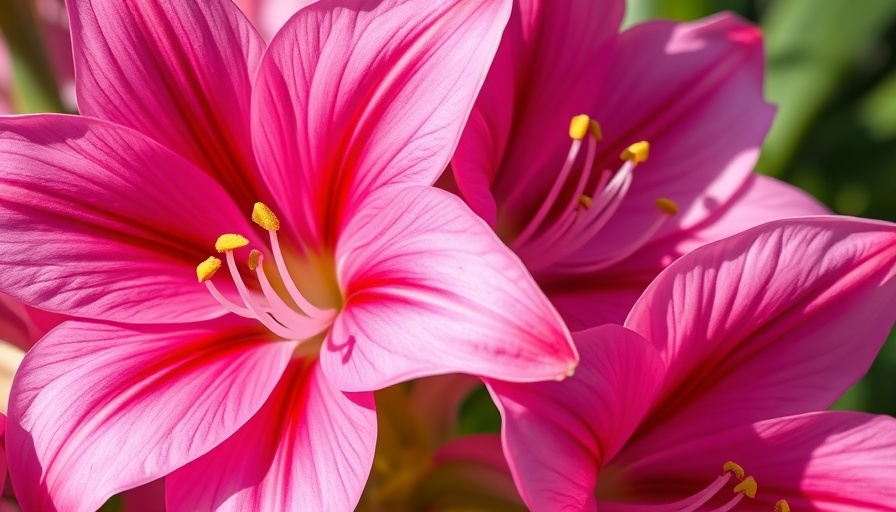
Unveiling the Beauty of Amaryllis Belladonna Lilies
Amaryllis belladonna, commonly known as the belladonna lily, stands out for its trumpet-shaped flowers and fragrant blooms that add a touch of color to late summer and early autumn gardens. With its spectacular hues of pink, mauve, and rose, it enriches the landscape and captures the hearts of gardeners. This late-flowering perennial thrives in sunny, warm, dry conditions and is perfect for those who appreciate flowers that shine in the quieter months of the gardening calendar.
A Unique Plant with Rich Characteristics
Also referred to as the Jersey lily or naked lady lily, Amaryllis belladonna has characteristics that are as intriguing as its name. Unlike the typically forced indoor bulbs known as Hippeastrum, belladonna lilies require an understanding of their unique growth patterns and lifecycle. Here's what you need to know about growing and caring for these urban and suburban gems.
Growing Amaryllis Belladonna: The Essentials
To cultivate Amaryllis belladonna successfully, you need to provide it with ideal growing conditions. These half-hardy bulbs thrive in USDA zones 7-11, making them a great addition for many climate zones. Here are the essential steps you should follow:
- Soil: Ensure well-draining soil, enriched with organic matter.
- Sunlight: Find a sunny spot with direct light for optimal growth.
- Watering: Moderate watering is crucial; allow the soil to dry out between watering.
Once established, these bulbs can flourish with minimal maintenance, rewarding you with vigorous flower stalks that might produce up to 12 blooms each, lasting six to eight weeks and attracting bees, butterflies, and hummingbirds to your garden.
Maintenance Tips for Long-Term Success
Once the flowers fade, Amaryllis belladonna continues to grace your garden with glossy green foliage, forming attractive clumps. Here’s how to ensure your plants remain healthy and vibrant:
- Fertilization: Use organic fertilizers to provide necessary nutrients, particularly during active growth in fall and winter.
- Pest Management: Keep an eye out for common pests; these plants are generally pest-resistant but can occasionally attract aphids.
- Dormancy Period: Allow the foliage to die back naturally as summer transitions to fall, preparing the plant for its winter rest.
Propagation: Easy as Planting a Bulb
To share the beauty of Amaryllis belladonna with friends and family, you can propagate the bulbs through division. After a few seasons, when clumps become overcrowded, carefully dig up the bulbs and separate them. Replant the new bulbs in prepared beds or containers, allowing them to thrive on their own. This DIY gardening project not only extends your garden's beauty but also offers a fulfilling way to engage with nature.
Embracing Flavors: Combining Aesthetics with Edibles
As you embrace the allure of Amaryllis belladonna, consider creating a diverse garden that features these extraordinary flowers alongside vegetables and herbs. This not only enhances your landscape aesthetic but also supports biodiversity. Consider planting companion plants that thrive in similar conditions or integrating edible plants that benefit from the same nurturing approach.
Final Thoughts: Crafting Your Garden Dream
As you plan your gardening endeavors, let the Amaryllis belladonna inspire you to explore new heights in both beauty and self-sufficiency. By cultivating these stunning flowers, you’ll not only add color to your life but also provide food and shelter for vital pollinators.
Now is the time to take the plunge into the world of belladonna lilies. Understanding their needs and how to care for them opens doors to creating your own vibrant garden. Are you ready to attract floral beauty to your home? Dive into action and start your journey in sustainable gardening today!
 Add Row
Add Row  Add
Add 




 Add Row
Add Row  Add
Add 

Write A Comment